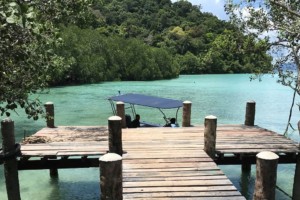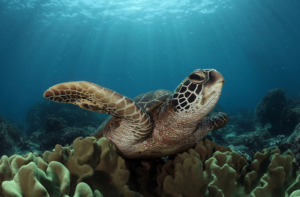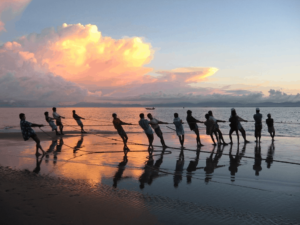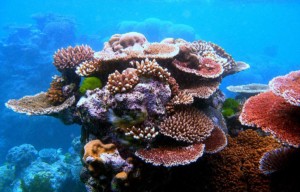Conservationists “condemn” Philippines Tourism Sec’y for Coral World Park
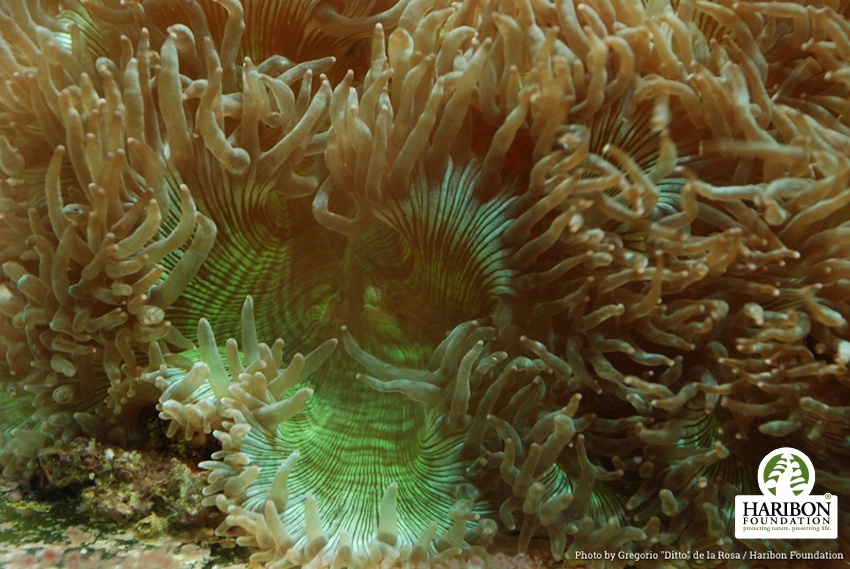
A statement from the Haribon Foundation for the Conservation of Natural Resources and PAMANA Ka Sa Pilipinas, a network of community-based marine protected area managers, asserts that “the construction activity itself and the resulting deluge of people to such a resort will have harmful effects to the surrounding environment, including the plethora of wastes as a result of tourism activities that not even the best protection and conservation measures can prevent or guard against”.
The statement called upon Teo to read her own National Tourism Development Plan, which they say espouses a “highly competitive and environmentally and socially responsible tourism that delivers more widely distributed income”.
Furthermore, Haribon insists Teo consider the following threes points in her role as Tourism Secretary:
- Make locals top priority: “Consider local knowledge and opportunities for employment. Recognize the rights of affected indigenous groups (i.e. Tagbanuas) including issues about ancestral domains and participation in decision-making processes.”
- “Promote the management of natural habitats and ecological services to enhance biodiversity that benefits the entire community through healthy ecology, ecotourism and sustainable livelihood.”
- “Convert tourism investments into local conservation actions: DOT should capitalize on the Philippines, as a mega-biodiverse country and the global center of marine biodiversity, by promoting appreciation of the natural environment in its natural state and underscoring its life-giving attributes.”
The Haribon/PAMANA statement came after Teo confirmed that the planned Nickelodeon theme park was “pushing through”. In an interview with CNN Philippines aired on June 1, she recalled the personal assurance given to her by representatives of Viacom International Media Networks (Nickelodeon’s owners) and its development partner, Coral World Park Undersea Resorts, that corals would not be harmed during the construction of the park.
As criticism of the plans have escalated, Coral World Park has played down the “undersea” nature of the development: “The only infrastructure in the water is floating and all developments are on land.”

Nickelodeon cartoon characters alongside an artists’ impression of part of the Coron development. Both images from the ‘NickALive’ blog.
In January, Viacom announced its collaboration with Coral World Park to develop a “Nickelodeon undersea attraction and resort [that] will be part of Coral World Park, a 400-hectare undersea-themed masterplanned development in [the] Western Philippine province of Coron, Palawan”.
Conservationists “condemn”
The full Haribon/PAMANA statement, as follows (word for word):
“The Haribon Foundation for the Conservation of Natural Resources, Inc. and PAMANA Ka Sa Pilipinas, the largest network of community-based marine protected area managers condemn Tourism Secretary Wanda Teo’s public declaration of support of the building of the Coral World Park in Coron, Palawan.
“We take a stand against the building of any entertainment resort complex in Coron, Palawan, within any area that is part of or near any protected area or nature reserve.
“The estimated value of lost ecosystem services of Coron reefs is at $36,794 per hectare every year (Costanza, et. al, 2014) if the project pushes through. This includes forfeited fishing opportunities for local fishers, storm protection and the release of 268.8 tons of carbon stocks per hectare of deforested mangrove areas (Abino et al., 2014).
“This project by Nickelodeon and Coral World Park Undersea Resorts will affect how corals settle and build a reef thereby threatening tens of thousands of marine species sheltered by reefs. Needless to say, the construction will affect corals and other biodiversity which rely heavily on their tactile and aural sensory to navigate and settle on reefs.
“The presence of Anacropora spinosa, an endemic coral gives a concrete picture to the construction’s potential impacts. The Philippines has 29 of the 50 Evolutionarily Distinct and Globally Endangered (EDGE) Coral Reef species, including the elegance coral (Catalaphyllia jardinei), considered Vulnerable by Philippine coral scientists and the International Union for Conservation of Nature (IUCN) Red List of Threatened Species. Some of which are found in Coron.

Conservationist groups, including Haribon, condemn Philippine Tourism Secretary Wanda Teo for the proposed Coral World Park development in Coron, Palawan. Image: Haribon
“These coastal habitats are feeding and nursery grounds for 1,881 coral reef associated fishes. At least two species of blennies, a small tropical reef-dwelling fish, are found only in the Calamianes Island, including Coron, in the Philippines such as the Ecsenius kurti and E. tricolor (Allen et al. 2003). The fact that “development” projects fail to consider the cost of evolutionary history that will be lost when the plan gets a green light is devastating.
“There are tourists who put more premium on natural and cultural heritage – the ideal for ecotourism. Consumers (read: tourists) who support eco-tourism will normally expect and prefer the natural environment, not manmade or artificial structures, and therefore engage in increasingly popular activities such as hiking, river rafting, scuba diving and wildlife watching.
“Ultimately, we invite Sec. Teo to peruse her office’s National Tourism Development Plan, which espouses a “highly competitive and environmentally and socially responsible tourism that delivers more widely distributed income.”
“Haribon calls on Sec. Teo to consider the following:
- “Put the locals on top priority (i.e. governance): Consider local knowledge and opportunities for employment. Recognize the rights of affected indigenous groups (i.e. Tagbanuas) including issues about ancestral domains and participation in decision-making processes.
- “Promote the management of natural habitats and ecological services (i.e. habitat management) to enhance biodiversity that benefits the entire community through healthy ecology, ecotourism and sustainable livelihood.
- “Convert tourism investments into local conservation actions: DOT should capitalize on the Philippines, as a mega-biodiverse country and the global center of marine biodiversity, by promoting appreciation of the natural environment in its natural state and underscoring its life-giving attributes.”
Featured image: A resident of Coron, the elegance coral (Catalaphyllia jardinei) is considered a vulnerable species. (Haribon)
Related posts


